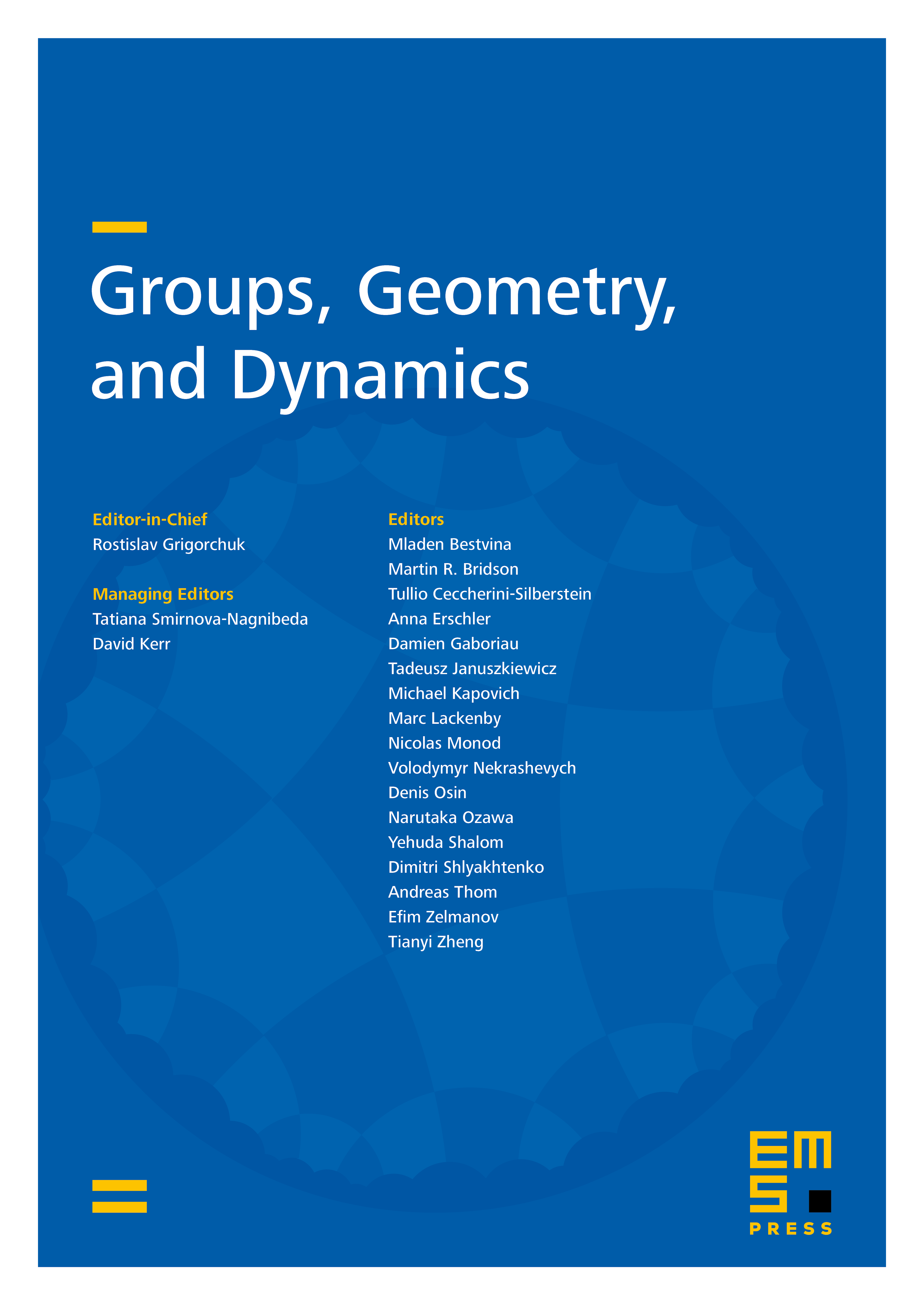A sharper threshold for random groups at density one-half
Moon Duchin
Tufts University, Medford, USAKasia Jankiewicz
McGill University, Montreal, CanadaShelby C. Kilmer
University of Utah, Salt Lake City, USASamuel Lelièvre
Université Paris-Sud, Orsay, FranceJohn M. Mackay
University of Bristol, UKAndrew P. Sánchez
Tufts University, Medford, USA

Abstract
In the theory of random groups, we consider presentations with any fixed number of generators and many random relators of length , sending . If is a „density“ parameter measuring the rate of exponential growth of the number of relators compared to the length of relators, then many group-theoretic properties become generically true or generically false at different values of . The signature theorem for this density model is a phase transition from triviality to hyperbolicity: for , random groups are a.a.s. infinite hyperbolic, while for , random groups are a.a.s. order one or two. We study random groups at the density threshold . Kozma had found that trivial groups are generic for a range of growth rates at ; we show that infinite hyperbolic groups are generic in a different range. (We include an exposition of Kozma's previously unpublished argument, with slightly improved results, for completeness.)
Cite this article
Moon Duchin, Kasia Jankiewicz, Shelby C. Kilmer, Samuel Lelièvre, John M. Mackay, Andrew P. Sánchez, A sharper threshold for random groups at density one-half. Groups Geom. Dyn. 10 (2016), no. 3, pp. 985–1005
DOI 10.4171/GGD/374